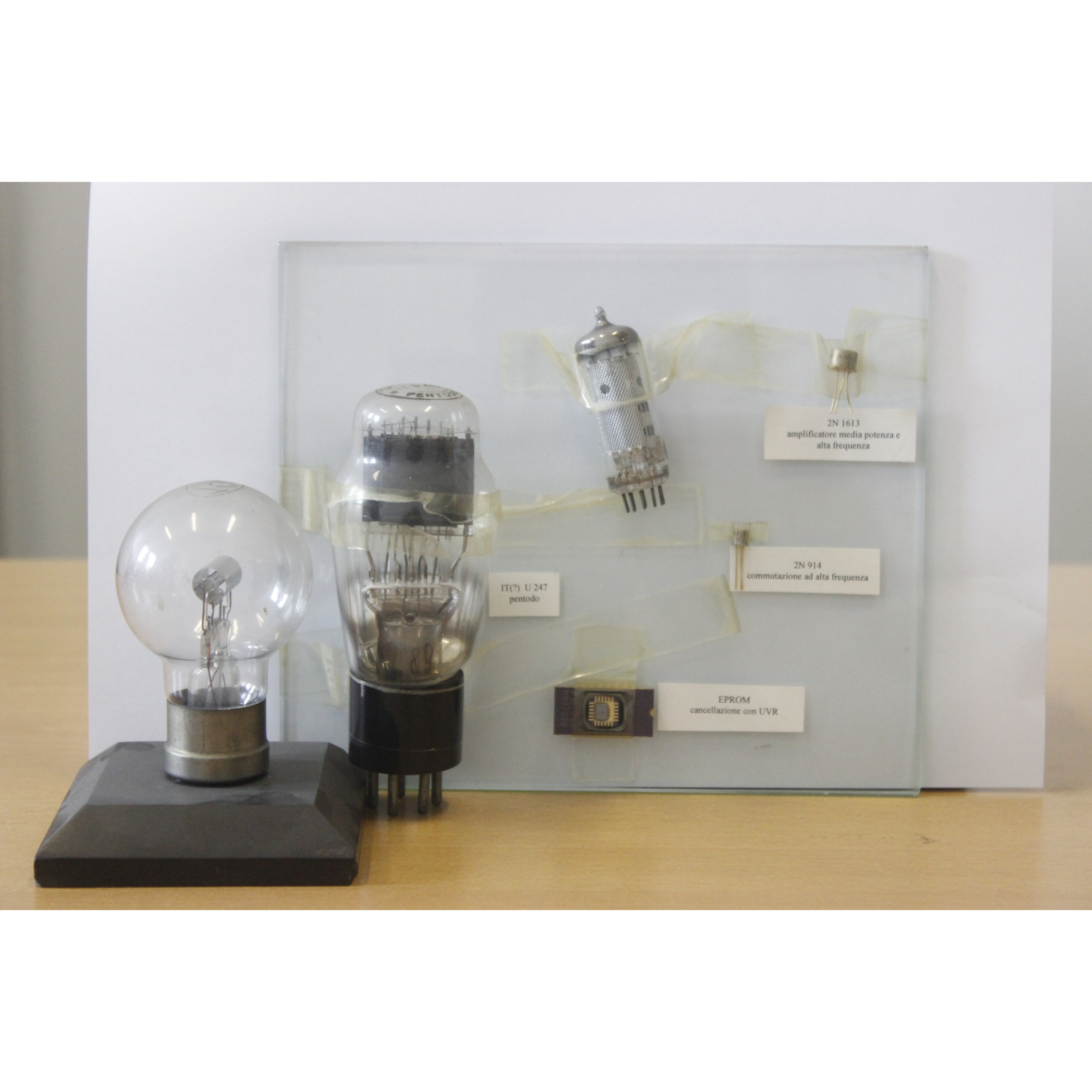
The thermionic valve consists of a glass casing (with some models being made of metal or ceramic), in which a vacuum was created. Inside the casing there is a metal filament which is led to incandescence (between 1,000 and 3,000 ° C) with the use of an electric current. Inside the casing there are also one or more metal elements (in the form of grids or screens), which can be connected from the outside. The metallic filament, or rather a small metal tube that wraps it, in the case of indirect heating, is called a cathode. The outermost metal element is called an anode. Any intermediate element is called grid.
INSIGHTS
The thermionic valve (or vacuum tube) was the first "active" electronic component. "Active" because it is a component that, thanks to an external source of energy, is able to amplify a signal.
The operating principle is that of the thermionic emission: every metal, especially at high temperatures, emits electrons, elementary electric charges of negative sign. If the cathode is negatively polarized
compared to the anode, or if the cathode is connected to the negative pole of a battery and the anode to the positive one, a flow of electrons – i.e., an electric current – will be established between the cathode and the anode (because the electrons are attracted by the anode). If the polarization is opposite, no electric current will pass between the cathode and the anode, because the anode will repel the electrons. As a result, device capable of passing the current in a single direction (diode), mainly used as a detector or as a rectifier, is obtained.
Furthermore, the flow of electrons can be controlled by applying a voltage to a metal grid (control grid) located between the cathode and the anode; negative voltages will reduce the flow of electrons, while positive voltages will increase it. That’s how the triode, the first amplifier device, was born.
The effect of the thermionic emission of electrons by metals brought to incandescence had already been
discovered in England in 1873 and was therefore studied carefully by the Englishman Owen Willans Richardson. It was another Englishman, John Ambrose Fleming, who invented the diode in 1904 and an
American inventor, Lee De Forest, who invented the triode in 1906. Guglielmo Marconi was among the first to recognize the importance of thermionic tubes and to use them in his two-way radios.
During World War II thermionic tubes were made for military applications, miniaturized and contained in metal casings, which were more robust and could also withstand considerable shocks.
Up until the 1960s, various types of thermionic were used in large quantities in electronic equipment such as radio receivers and transmitters, TV sets and, generally, in all types of electrical signal amplifiers. Even
the first electronic computers were entirely made out of thermionic tubes. The invention of the thermionic valve made it possible to move from radiotelegraphy to radio broadcasting, since, by amplifying the
electrical signals, it allowed to transmit not only telegraphic impulses, but also voices and sounds, thus leading to the era of mass media.
The ENIAC, the first fully electronic computer, functioned thanks to 17468 thermionic tubes (equivalent to as many transistors) and consumed 160 kW of electric energy just to keep them on.